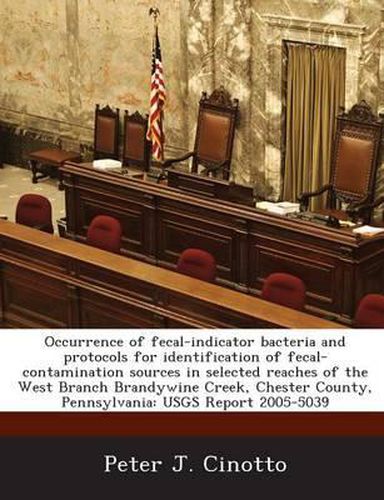Readings Newsletter
Become a Readings Member to make your shopping experience even easier.
Sign in or sign up for free!
You’re not far away from qualifying for FREE standard shipping within Australia
You’ve qualified for FREE standard shipping within Australia
The cart is loading…






The presence of fecal-indicator bacteria indicates the potential presence of pathogens originating from the fecal matter of warm-blooded animals. These pathogens are responsible for numerous human diseases ranging from common diarrhea to meningitis and polio. The detection of fecal-indicator bacteria and interpretation of the resultant data are, therefore, of great importance to water-resource managers. Current (2005) techniques used to assess fecal contamination within the fluvial environment primarily assess samples collected from the water column, either as grab samples or as depth- and (or) width-integrated samples. However, current research indicates approximately 99 percent of all bacteria within nature exist as attached, or sessile, bacteria. Because of this condition, most current techniques for the detection of fecal contamination, which utilize bacteria, assess only about 1 percent of the total bacteria within the fluvial system and are, therefore, problematic. Evaluation of the environmental factors affecting the occurrence and distribution of bacteria within the fluvial system, as well as the evaluation and modification of alternative approaches that effectively quantify the larger population of sessile bacteria within fluvial sediments, will present water-resource managers with more effective tools to assess, prevent, and (or) eliminate sources of fecal contamination within pristine and impaired watersheds.
$9.00 standard shipping within Australia
FREE standard shipping within Australia for orders over $100.00
Express & International shipping calculated at checkout
The presence of fecal-indicator bacteria indicates the potential presence of pathogens originating from the fecal matter of warm-blooded animals. These pathogens are responsible for numerous human diseases ranging from common diarrhea to meningitis and polio. The detection of fecal-indicator bacteria and interpretation of the resultant data are, therefore, of great importance to water-resource managers. Current (2005) techniques used to assess fecal contamination within the fluvial environment primarily assess samples collected from the water column, either as grab samples or as depth- and (or) width-integrated samples. However, current research indicates approximately 99 percent of all bacteria within nature exist as attached, or sessile, bacteria. Because of this condition, most current techniques for the detection of fecal contamination, which utilize bacteria, assess only about 1 percent of the total bacteria within the fluvial system and are, therefore, problematic. Evaluation of the environmental factors affecting the occurrence and distribution of bacteria within the fluvial system, as well as the evaluation and modification of alternative approaches that effectively quantify the larger population of sessile bacteria within fluvial sediments, will present water-resource managers with more effective tools to assess, prevent, and (or) eliminate sources of fecal contamination within pristine and impaired watersheds.